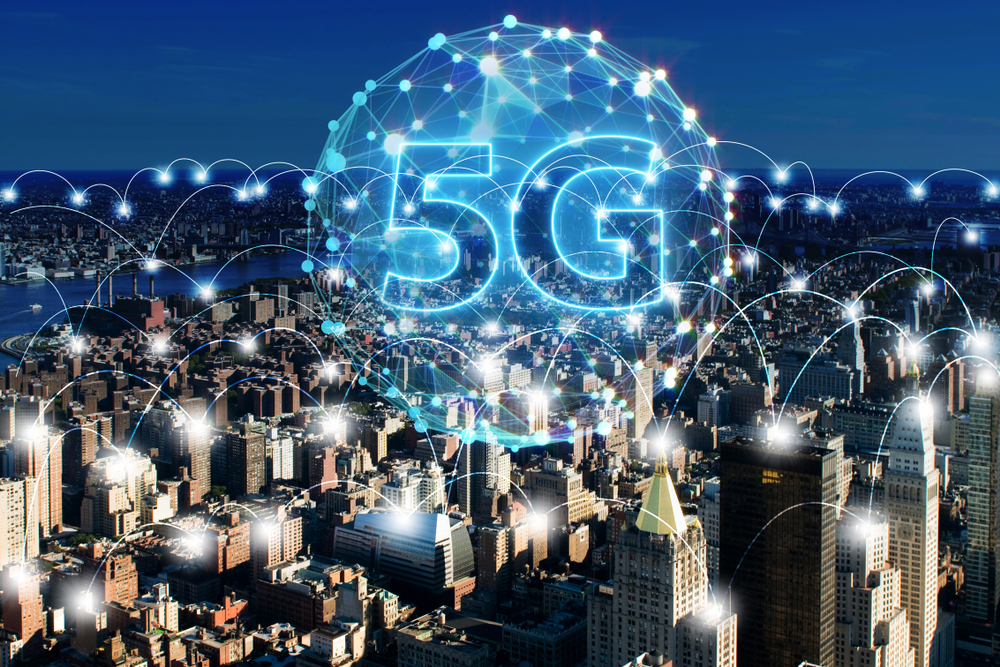We discuss the following topics in this blog:
- Should Operators’ Architectures Become Programmable?
- What is the New Vision for Networking Operations?
- The 5G Ecosystem Must be Built Differently
In addition to these topics, we shall also be answering the following FAQs:
- What is WiFi?
- What is an Optical Fibre Cable?
Contents
Should Operators’ Architectures Become Programmable?
If the customised, software-defined networks needed to enable affordable 5G are to be achieved, operators’ architectures must become programmable, open and disaggregated, Ayush Sharma, Head of Programmable Network & Intelligence at Sterlite Technologies Ltd (STL), said today.
Speaking at Mobile World Congress Shanghai, Sharma told delegates that Software Defined Networking (SDN), Network Functions Virtualisation (NFV) and Artificial Intelligence (AI) must be leveraged to improve time-to-market of innovative 5G services and business models. This, in turn, will provide operators with the means to satisfy end-users’ bandwidth-hungry needs and extend 5G networks beyond rural boundaries, bringing affordable access and new opportunities for social-economic growth and development.
What is the New Vision for Networking Operations?
“2019 has seen 5G come to fruition, with operators beginning to roll-out commercial networks worldwide,” said Sharma. “But, to understand the full potential of 5G and the use cases it can unlock, such as an immersive broadband and cloud experience, massive machine communications and ultra-low latency applications, a new vision for networking operations is vital.”
As part of this, network architectures must evolve to become programmable, open and disaggregated so they can be integrated with software via programmable and white-box hardware. New relationships between infrastructure owners – public and private networks – must be formed, including new industry alliances, to drive innovation through multiple layers through the use of open specifications and open source code.
The 5G Ecosystem Must be Built Differently
The 5G ecosystem must be built differently, leveraging radio networks, the packet core, the cloud edge and the Internet to support high-speed, ubiquitous connectivity. With such a network, operators will be able to excel their technology, automation and delivery models – ensuring faster time-to-market. The ability to control infrastructure assets and overcome latency issues will also enable customer experience to be measured in real-time – ensuring enhanced user experience.
“This approach is already being adopted by global tier-1 mobile providers who are rolling-out 5G and Fibre-to-the-X (FTTx) networks, providing the means to deliver affordable and reliable 5G connectivity to all corners of the world,” concluded Sharma.
Join us at Mobile World Congress 2020, Barcelona where we’ll showcase our ground-breaking technology solution catering Data centers, 5G, IoT and more.
FAQs
What is WiFi?
Put simply, WiFi is a technology that uses radio waves to create a wireless network through which devices like mobile phones, computers, printers, etc., connect to the internet. A wireless router is needed to establish a WiFi hotspot that people in its vicinity may use to access internet services. You’re sure to have encountered such a WiFi hotspot in houses, offices, restaurants, etc.
To get a little more technical, WiFi works by enabling a Wireless Local Area Network or WLAN that allows devices connected to it to exchange signals with the internet via a router. The frequencies of these signals are either 2.4 GHz or 5 GHz bandwidths. These frequencies are much higher than those transmitted to or by radios, mobile phones, and televisions since WiFi signals need to carry significantly higher amounts of data. The networking standards are variants of 802.11, of which there are several (802.11a, 802.11b, 801.11g, etc.).
What is an Optical FIbre Cable?
An optical fibre cable is a cable type that has a few to hundreds of optical fibres bundled together within a protective plastic coating. They help carry digital data in the form of light pulses across large distances at faster speeds. For this, they need to be installed or deployed either underground or aerially. Standalone fibres cannot be buried or hanged so fibres are bunched together as cables for the transmission of data.
This is done to protect the fibre from stress, moisture, temperature changes and other externalities. There are three main components of a optical fibre cable, core (It carries the light and is made of pure silicon dioxide (SiO2) with dopants such as germania, phosphorous pentoxide, or alumina to raise the refractive index; Typical glass cores range from as small as 3.7um up to 200um), Cladding (Cladding surrounds the core and has a lower refractive index than the core, it is also made from the same material as the core; 1% refractive index difference is maintained between the core and cladding; Two commonly used diameters are 125µm and 140µm) and Coating (Protective layer that absorbs shocks, physical damage and moisture; The outside diameter of the coating is typically either 250µm or 500µm; Commonly used material for coatings are acrylate,Silicone, carbon, and polyimide).
An optical fibre cable is made up of the following components: Optical fibres – ranging from one to many. Buffer tubes (with different settings), for protection and cushioning of the fibre. Water protection in the tubes – wet or dry. A central strength member (CSM) is the backbone of all cables. Armoured tapes for stranding to bunch the buffer tubes and strength members together. Sheathing or final covering to provide further protection.
The five main reasons that make this technology innovation disruptive are fast communication speed, infinite bandwidth & capacity, low interference, high tensile strength and secure communication. The major usescases of optical fibre cables include intenet connectivity, computer networking, surgery & dentistry, automotive industry, telephony, lighting & decorations, mechanical inspections, cable television, military applications and space.















